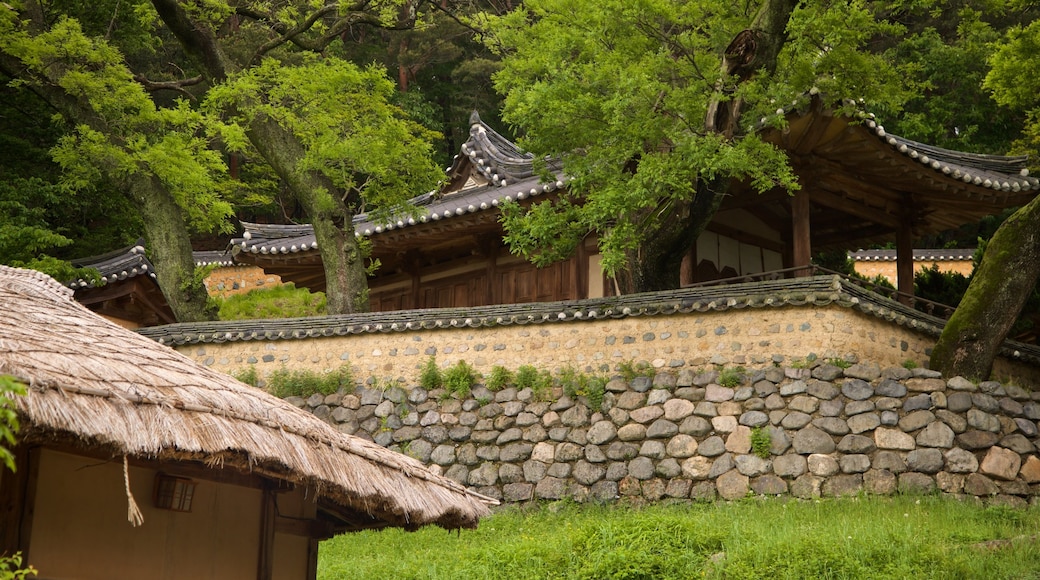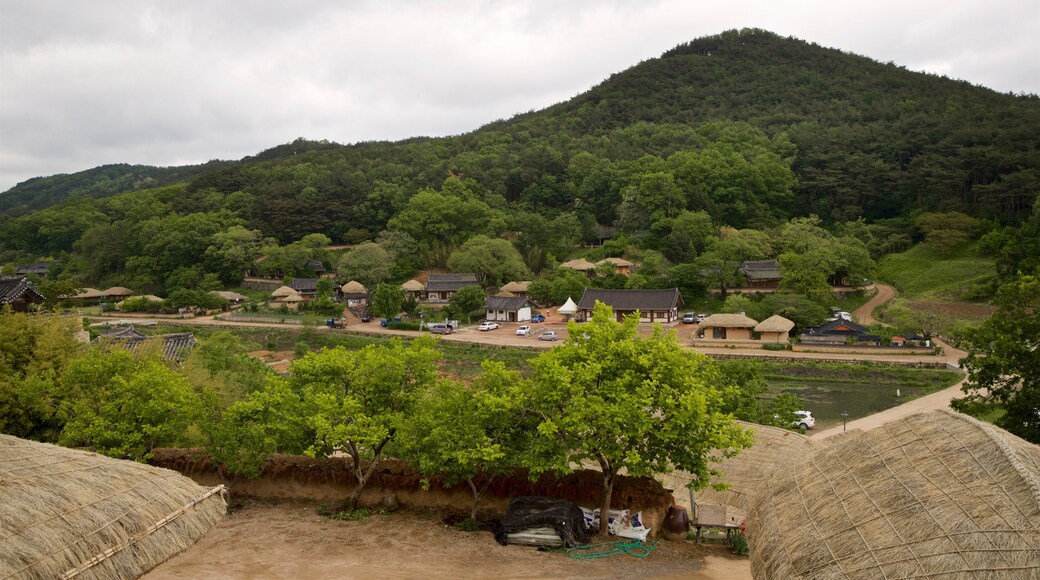The Yangdong Folk Village has origins dating back 500 years to the days of the Joseon Dynasty. Come here to see as many as 50 houses that are over 200 years old. Make sure you wear good walking shoes as you can easily spend hours exploring all the little lanes in the village.
While listed as a UNESCO World Heritage Site in 2010, the village is still inhabited by locals and looks and feels like a large open-air museum. Be alert to spot the sleek white statue on the road, marking the entrance of the village.
Start your visit at the small museum with murals and dioramas. While here, ask for a map or take a photo of the map on the big sign to help you find your way around the village. Pick one of the suggested routes or make you own way up and down the gently sloping hills.
Stop often to admire the charming hanoks, the traditional-style houses of the Joseon Dynasty that are dotted throughout the village. Notice how some houses have elegant tiled roofs while others have simple thatched roofs. It is thought that the property owners used to live in the tiled houses while their servants and staff lived in the thatched buildings. Stone walls surround many of the houses, while old trees and beautiful flowers dot the gardens.
Lower in the valley, look for the wetlands and vegetable gardens in neat rows, surrounded by rolling hills covered in more traditional houses and dense forest. Wander along the stream at the bottom of the valley to see the water lilies bloom in summer.
Book ahead to stay a night in one of the folk village’s small guest houses to get even more of a feel for what life is really like here.
The Yangdong Folk Village is best reached by taxi, bus or car as it is a fair way out of the city. Check bus timetables beforehand for the departure and return times that best suit your schedule. There is parking is available at the village and toilet facilities are provided.













